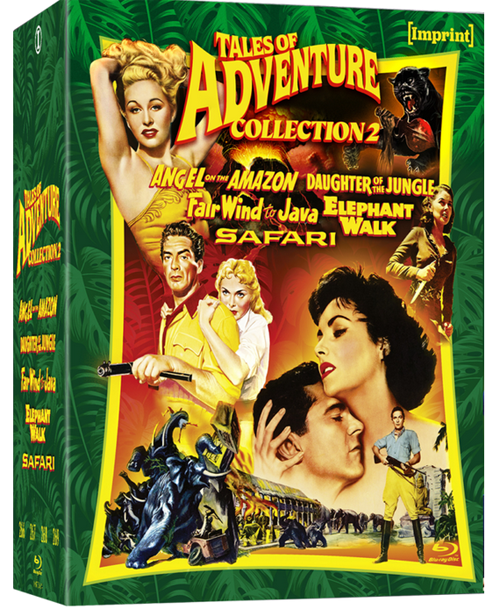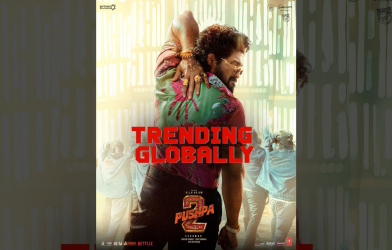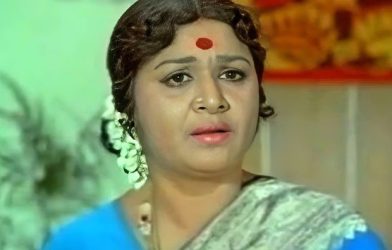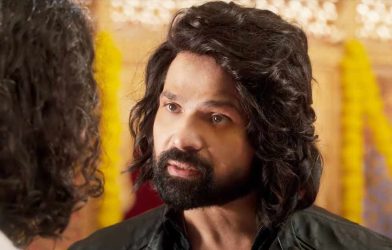
By
Fred Blosser
“Tales
of Adventure Collection 2,” a special edition, Blu-ray box set from
Australia’s Imprint Films, gathers five movies from the 1940s and ‘50s with
“wild and dangerous” jungle settings. To
the best of my memory, I don’t recall seeing any of them among the scores of
jungle pictures I enjoyed as a kid in the ‘50s and early ‘60s, either on the
big screen or on local TV morning movie matinees. Of the five diverse selections in the Imprint
box set, three are Republic Pictures productions, the fourth is a Paramount
release, and the fifth bears the Columbia Pictures logo. All five feature superior transfers (the
three Republic entries are transfers from 4K scans of the original negatives)
and captions for the deaf and hard of hearing, and four of them come with
excellent audio commentaries. Younger
viewers be aware, the films tend to reflect attitudes about race and
conservation that were commonplace seventy years ago, but frowned upon today;
you won’t see anything remotely like Black Panther’s democratic technocracy of
Wakanda here.
The
older two Republic releases, both in black-and-white and paired here on one
disc, underscore the studio’s reputation as a purveyor of lowbrow entertainment
with stingy production values. “Angel on
the Amazon” (1948) begins with Christine Ridgeway (Vera Hruba Ralston) trekking
through the Amazon jungle with safari hat and rifle, stalking panthers. It promises (or threatens, if you’re a
conservationist) to become a film about big-game hunting, where wild animals
exist to be turned into trophy heads. But
then Christine’s station wagon breaks down, and she radios for help. Pilot Jim Warburton (George Brent) flies in
with the needed carburetor part, just in time for the party to escape from
“headhunters.” This may be the only
jungle movie in history where rescue depends on a delivery from Auto Zone. Jim is enchanted by Christine, but she has
something to hide and refuses to warm up to his advances. Later, meeting Jim again in Rio de Janeiro,
she becomes frightened when an elderly, apparently harmless man watches her
from a distance. As film historian
Philippa Berry notes on the informative audio commentary for the Blu-ray, the
answer to the mystery revolves around the then-popular theme of physical
effects from psychological trauma, here given a mystical and somewhat absurd
twist. The studio-bound sets and back
projection that waft the characters from the Amazon to Rio and then to
Pasadena, California, are charmingly phoney. George Brent and two other fading co-stars from the 1930s, the
aristocratic Brian Aherne and Constance Bennett, stoutly maintain straight
faces in the backlot rain forest.
“Daughter
of the Jungle” (1949) is even more formulaic, as a young blonde woman raised in
the jungle comes to the aid of pilot Paul Cooper (James Cardwell), a policeman,
and two gangsters in the lawman’s custody when their plane crashes somewhere in
Africa. Called Ticoora by the local
tribe, she is actually Irene Walker, who was stranded with her millionaire
father in their own plane crash twelve years before. As film historian Gary Gerani notes in his
audio commentary track, Ticoora is one of a long line of virginal jungle sirens
in movies that range from the ridiculously sublime, like 1959’s “Green
Mansions,” to the sublimely ridiculous, like 1983’s “Sheena, Queen of the
Jungle.” She can summon elephants with a
Tarzan-like yodel that recalls Carol Burnett’s parodies on her old TV
show. As Ticoora leads the party to
safety, the oily head gangster, Kraik, schemes a way to claim her inheritance,
which awaits in New York. Some viewers
will see Kraik, played by the great Sheldon Leonard with a constant volley of
“dese, dose, and dem” insults, as the only reason to stay with the movie’s plod
through lions, gorillas, crocodiles, and indigenous Africans played by white
actors in greasepaint. Others (I plead
guilty) tend to view unassuming, ramshackle pictures like this one more
leniently, providing we can accept if not endorse their racial attitudes as a
product of their times. Consistent with
Republic’s nickel-and-diming on its B-feature releases, especially those made
in the late ‘40s, the more spectacular long shots of Ticoora swinging from
vines in her above-the-knee jungle skirt were recycled from one of the studio’s
earlier releases. In those scenes, it’s
actually Francis Gifford’s stunt doubles in the same outfit from the 1941
serial “Jungle Girl,” not Lois Hall who plays Ticoora in the new footage. Gary Gerani’s audio commentary provides lots
of information about the cast, including the two obscure leads, Lois Hall and
James Cardwell. Gerani points out that
the Blu-ray print, from the original negative, presents the movie’s full
80-minute version for the first time ever. The 69-minute theatrical release in 1949 omitted some B-roll filler and
some scenes where Paul woos Irene. More
action, less kissy, was crucial for encouraging positive playground
word-of-mouth from sixth graders in the audience—the pint-sized forerunners of
today’s Tik-Tok influencers.
The
third movie retrieved from Republic’s vaults, “Fair Wind to Java” (1953), was
one of the studio’s intermittent efforts to offer more expensive productions in
living Trucolor, with a rousing Victor Young musical score, to compete with
major postwar costume epics from the MGM and Paramount powerhouses. Ironically, Paramount now owns the rights to
Republic’s home video library. In 1883
Indonesia, New England sea captain Boll (Fred MacMurray) picks up the trail of
lost diamonds also sought by a pirate chief, Pulo Besar (Robert Douglas). Obstacles include the pirates, some scurvy
knaves in Boll’s own crew, Dutch colonial authorities, and the fact that the
only person who can direct Boll to the treasure is dancing girl Kim Kim (Vera
Hruba Ralston), who has only an imperfect memory of the route from her
childhood. Substitute Indiana Jones for
Captain Boll, and you’d hardly notice the switch. It turns out that the gems are hidden in a
temple on Fire Island—unfortunately for the captain, not the friendly enclave
of Fire Island, N.Y., but the volcanic peak of Krakatoa. Will Krakatoa blow up just as the rival
treasure hunters make landfall there? Are you kidding? The script doesn’t disappoint, and neither do the FX by
Republic’s in-house technical team, Howard and Theodore Lydecker. A former ice skating star who escaped
Czechoslovakia ahead of the Nazis, Ralston was the wife of Republic studio head
Herbert J. Yates and widely derided as a beneficiary of nepotism who couldn’t
act her way out of an audition. She was
still a punch line for comics in the 1960s, long after most people had
forgotten the point of the joke. In
reality, both here and in “Angel on the Amazon,” she is an appealing performer,
no more deserving of ridicule than other actresses of her time with careers
mainly in escapist pictures. The sultry
but vulnerable Kim Kim was the kind of role that Hedy Lamarr might have played
under other circumstances. Ralston’s
performance is at least as engaging, and she looks mighty nice in brunette
makeup and sarong.
If
you first met Fred MacMurray as the star of “My Three Sons,” as I did as a kid,
it may take some adjustment to see him in action-hero mode. It’’s no big deal when Dwayne Johnson or
Jason Statham slings a bandolier over his shoulder or has his shirt torn off in
a brawl with a pugnacious sailor . . . but Fred MacMurray? When Boll ponders whether or not to trust his
shifty first mate Flint (John Russell), it’s a little like MacMurray’s suburban
dad asking Uncle Charlie if he should trust Robbie and Chip with the family
car. John Wayne was originally
envisioned for the role, following his starring credit in a similar Republic
production, “Wake of the Red Witch,” but MacMurray wasn’t completely out of his
element, having played lawmen and gunslingers in several Westerns before his
sitcom days. Frankly, it’s fun to see
the normally buttoned-down actor shooting it out with the pirates and racing a
tsunami. Imprint includes another
excellent commentary, this one by historian Samm Deighan. As she notes, colourfully mounted and briskly
scripted movies like this were designed to attract the whole family in those
days before Hollywood marketing fractured along lines of audience gender, age,
and race. As she observes, Junior might
not recognise the sado-sexual elements of the scene where Pulo Besar’s burly
torturer (played by Buddy Baer!) strips Kim Kim and plies his whip across her
bare back. All in a day’s work in the
dungeon. But dad likely would have sat
up and paid close attention.
Only
a year later (1954), Paramount’s “Elephant Walk” furthered Hollywood’s trend of
filming exteriors for its more prestigious movies in actual overseas locations
rather than relying on studio mockups, as “Fair Wind to Java” did. Ruth Wiley (Elizabeth Taylor at her most
luminous) travels to Ceylon (now Sri Lanka) with her new husband John (Peter
Finch), the charming and prosperous owner of a tea plantation. Initially, Ruth is enraptured by the lush
countryside and John’s bungalow, Elephant Walk, actually a mansion almost as
large as Grand Central Station and a lot more lavish. But trouble portends as Ruth realizes that
the memory of John’s imperious father Tom, reverently called “the Governor” by
John and the other British residents, still pervades and controls the
household. The elderly head steward,
Appuhamy (Abraham Sofaer), is quietly hostile when Ruth questions the need to
continue running the house exactly as it was run in the Governor’s day. In trying to communicate with the other
indigenous servants and workers, she runs into the barriers of language and
culture. The estate itself, complete
with Old Tom’s mausoleum in the backyard, is built across an ancestral path the
native elephants still try to use as a short cut to their watering holes. Hence its name. Wiley keeps the peripatetic pachyderms out
with a wall. His plantation manager
(Dana Andrews) is more sympathetic to Ruth, and the two fall in love as the
increasingly surly John lapses back into old habits of drinking all night with
rowdy fellow expatriates who camp out in the sprawling mansion. Andrews’ character is named “Dick Carver,”
the kind of name you’re not likely to see on credits anymore outside
Pornhub. I wonder if some moviegoers in
1954 found it funny too?
If
the combination of shaky marriage, illicit affair, and luxurious colonial life on a jungle plantation sounds
familiar, you may be thinking of “Out of Africa” (1985) or the less
romanticised “White Mischief” (1987), the latest examples of this particular
jungle sub-genre of domestic drama in the tropics. As Gary Gerani points out in his audio
commentary, enthusiasts of melodrama will also cry “Rebecca!” in the subplot
about the shadow that “the Governor’s” pernicious, posthumous influence casts
over the married couple. The movie’s
lush Technicolor palate, William Dieterle’s sleek direction, the special FX of
an elephant stampede, Edith Head’s ensembles for Liz, and Franz Waxman’s
symphonic score have an old-fashioned Hollywood polish, shown to good effect on
the Blu-ray. But as Gerani notes, the
script by John Lee Mahin, based on a 1948 novel, offers an implicit political
commentary too. As viewers of “The
Crown” know, British rule was already crumbling in the Third World in the early
1950s and would soon fall, just like Wylie’s wall faces a renewed assault by
drought-stricken elephants in the final half hour of the movie. Thanks to the capable cast, glossy production
values, and a script that takes interesting, unexpected turns, I liked
“Elephant Walk” more than I thought I would.
Terence
Young’s “Safari” (1956) from Columbia Pictures begins with a jaunty title song
to a percussive beat that wouldn’t be out of place in “The Lion King”—“We’re on
safari, beat that drum, / We’re on safari to kingdom come”—leading you to think
that the picture will be a romp like “Call Me Bwana” (1963), “Clarence the
Cross-Eyed Lion” (1965), or the last gasp of jungle comedies so far, “George of
the Jungle” (1997). But the story takes
a grim turn almost immediately. An
American guide and hunter in Kenya, Ken Duffield (Victor Mature), is called
back from a safari to find his 10-year-old son murdered and his home burned by
Mau Mau terrorists. He determines to
find and kill the murderer, Jeroge (Earl Cameron), a formerly trusted servant
who, unknown to Duffield, had “taken the Mau Mau oath.” The British authorities revoke Duffield’s
license to keep him from interfering with their attempts to apprehend Jeroge
and the other culprits, but then they hand it back under pressure from Sir
Vincent Brampton (Roland Culver), who comes to Africa to kill a notorious lion
called “Hatari.” “You know what ‘Hatari’
means, don’t you?” Duffield asks. “It
means danger”—the very tagline used for Howard Hawks’ movie of the same name a
few years later. Coincidence? Brampton is a wealthy, borderline sociopathic
bully who makes life miserable for his finance Linda (Janet Leigh) and
assistant Brian (John Justin), and Duffield doesn’t much care for him
either. But the millionaire insists on
hiring Duffield as the best in the business, and the hunter uses the safari as
a pretext for pursuing Jeroge into the bush. The script juxtaposes Duffield’s chase after Jeroge with Brampton’s
determination to bag Hatari, but the millionaire is such an unpleasant
character (well played by Culver) that most of us will hope the lion wins.
This
was one of the last “big bwana” movies where no one thinks twice about killing
wild animals for sport, and viewers sensitive about the subject may not share
Sir Vincent’s enthusiasm for Ken Duffield’s talents, or the production’s
matter-of-fact scenes of animals collapsing from gunshots. The political material about the Mau Maus is
a little dicey too; the Mau Mau insurrection of 1952-60 was more complicated
than the script suggests. Poster art for
the movie, reproduced on the Blu-ray sleeve, depicts a fearsomely painted
African. Actually, it isn’t a Mau Mau
but a friendly Massai tribesman; Linda makes the same mistake in the movie
before learning that the Massai have agreed to help Duffield track Jeroge. Squirm-worthy dialogue occurs as well, when
Duffield and Brampton alike refer to the hunter’s African bearers and camp
personnel as “boys.” But Terence Young’s
brisk, muscular direction on outdoor locations in Kenya is exemplary, and the
CinemaScope vistas of Kenya in Technicolor are sumptuous. This was one of Young’s four projects behind
the camera for Irving Allen and Albert R. Broccoli’s Warwick Films, preceding
Broccoli’s later partnership with Harry Saltzman when the producers engaged
Young to direct the inaugural James Bond entries. For 007 fans, it may be heresy to suggest
that his work on “Safari” equals that on his best Bond picture, “From Russia
With Love,” but so be it. The Imprint
Blu-ray doesn’t contain an audio commentary or other special features, but the
hi-def transfer at the 2.55:1 widescreen aspect ratio is perfect.
“Tales
of Adventure Collection 2” contains the four region-free Blu-ray Discs in a sturdy
hardbox, illustrated with a collage from the poster art for the five movies in
the set. Limited to a special edition of
1,500 copies, it can be ordered HERE. (Note: prices are in Australian dollars. Use currency converter for non-Australian orders.)









